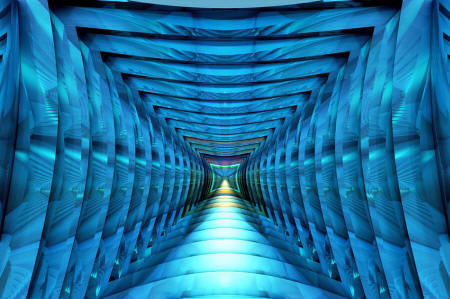|

by Anna LeMind
June 03, 2015
from
TheMindUnleashed Website
Spanish version

New Mind-blowing
Experiment
According to a well-known theory in
quantum physics, a particle's behavior changes depending on whether
there is an observer or not.
It basically suggests that reality is a
kind of illusion and exists only when we are looking at it. Numerous
quantum experiments were conducted in the past and showed that this
indeed might be the case.
Now, physicists at the Australian National University have found
further evidence for the illusory nature of reality.
They recreated the John Wheeler's
delayed-choice experiment and
confirmed that reality doesn't exist until it is measured, at least
on the atomic scale.
Thought-provoking findings
Some particles, such as photons or electrons,
can behave both as particles and as waves.
Here comes a question of what exactly
makes a photon or an electron act either as a particle or a wave.
This is what Wheeler's experiment asks:
at what point does an object
'decide'?
The results of the Australian
scientists' experiment, which were published in the journal Nature
Physics, show that this choice is determined by the way the object
is measured, which is in accordance with what quantum theory
predicts.
"It proves that measurement is
everything. At the quantum level, reality does not exist if you
are not looking at it," said lead researcher Dr. Andrew Truscott
in a press release.
The experiment
The original version of John Wheeler's experiment proposed in 1978
involved light beams being bounced by mirrors.
However, it was difficult to implement
it and get any conclusive results due to the level of technological
progress back then. Now, it became possible to successfully recreate
the experiment by using helium atoms scattered by laser light.
Dr. Andrew Truscott's team forced a hundred of helium atoms
into a state of matter called Bose-Einstein condensate. After this,
they ejected all the atoms until there was only one left.
Then, the researchers used a pair of laser beams to create a grating
pattern, which would scatter an atom passing through it just like a
solid grating scatters light. Thus, the atom would either act as a
particle and pass through one arm or act as a wave and pass through
both arms.
Thanks to a random number generator, a second grating was then
randomly added in order to recombine the paths. This was done only
after the atom had already passed the first grate.
As a result, the addition of the second grating caused interference
in the measurement, showing that the atom had traveled both paths,
thus behaving like a wave.
At the same time, when the second
grating was not added, there was no interference and the atom
appeared to have traveled only one path.
The results
and their interpretation
As the second grating was added only after the atom had passed
through the first one, it would be reasonable to suggest that the
atom hadn't yet 'decided' whether it was a particle or a wave before
the second measurement.
According to Dr. Truscott, there may be two possible interpretations
of these results:
"The atoms did not travel from A to
B. It was only when they were measured at the end of the journey
that their wave-like or particle-like behavior was brought into
existence," he said.
Thus, this experiment adds to the
validity of
the quantum theory and provides new
evidence to the idea that reality doesn't exist without
an observer.
Perhaps further research in the field of
quantum physics and more thought-provoking evidence like this will
completely change our understanding of reality one day.
"If quantum mechanics hasn't
profoundly shocked you, you haven't understood it yet."
Niels Bohr
Video
by
The Royal
Institution
February
01, 2013
from
YouTube Website
According to a well-known theory in quantum physics, a particle's
behavior changes depending on whether there is an observer or not. It basically suggests that reality is a
kind of illusion and exists only when we are looking at it.
Numerous
quantum experiments were conducted in the past and showed that this
indeed might be the case.
Now, physicists at the Australian National University have found
further evidence for the illusory nature of reality.
They recreated the
John Wheeler's
delayed-choice experiment and confirmed that reality doesn't exist
until it is measured, at least on the atomic scale.
|


